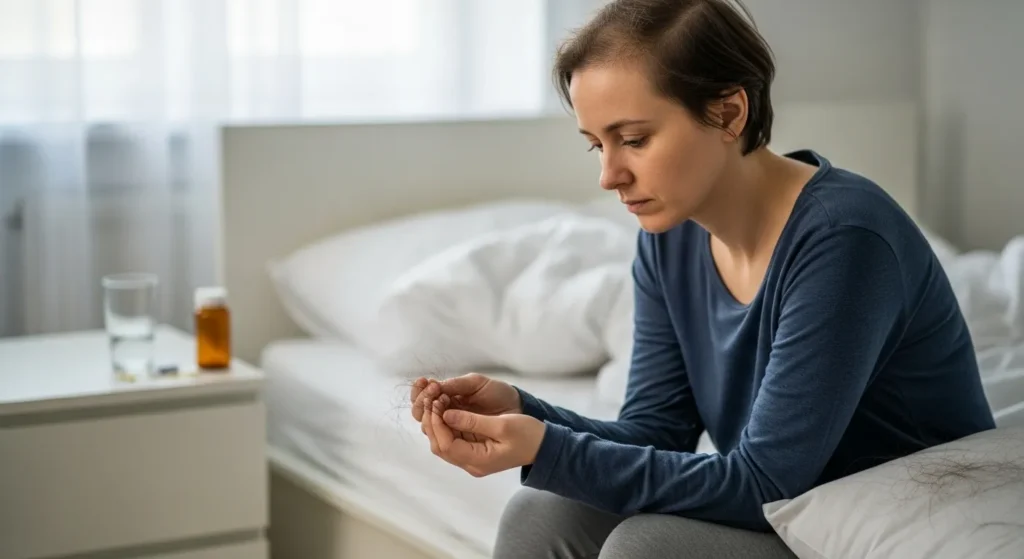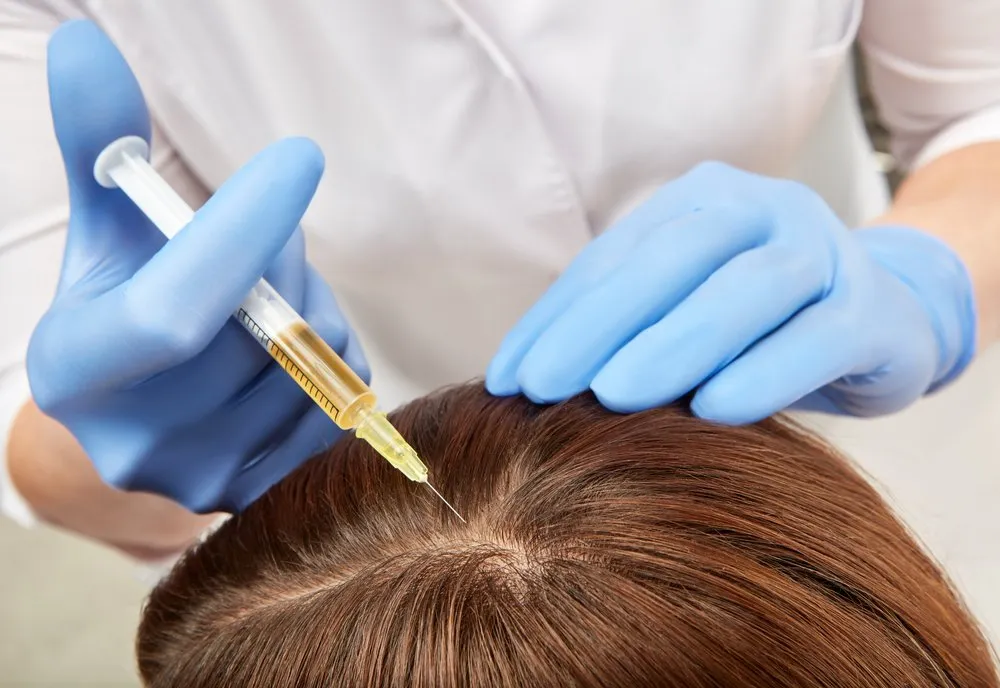Worried about thinning hair and searching for a female hair loss specialist Los Angeles? You’re not alone.
Female hair loss is a sensitive issue that requires personalized care, accurate diagnosis, and targeted treatment. In this article, you’ll learn the causes of women’s hair loss, explore proven and emerging therapies, and understand how expert care in LA can help restore your confidence and hair health.
With guidance from top specialists, recovery timelines, and real solutions, you’re in the right place to start your journey back to fuller hair.
Why Choose a Female Hair Loss Specialist in Los Angeles

Choosing a specialist who understands women’s unique hair loss patterns and hormonal influences is critical. Los Angeles, with its advanced medical centers and aesthetic-focused clinics, is home to several experts dedicated to women’s hair health.
Understanding Female-Specific Hair Loss Patterns
Unlike male-pattern baldness, female hair loss often presents as diffuse thinning or widening of the part. Conditions like female pattern hair loss (FPHL), telogen effluvium, and autoimmune-related hair loss require specific diagnostic techniques and treatment regimens.
Local Expertise & Advanced Clinics
LA offers access to dermatologists and trichologists who specialize in diagnosing and treating female hair loss. Top institutions like UCLA Health and boutique clinics in Beverly Hills and Santa Monica are known for combining medical insight with cosmetic excellence.
Patient-Centered Care
Women in Los Angeles benefit from a patient-first approach, with specialists offering consultations that focus on emotional well-being, aesthetics, and long-term outcomes, not just clinical recovery.
Common Causes of Female Hair Loss in LA Patients
Understanding what’s causing your hair loss is the first step to effective treatment. Here are some of the most common culprits:
- Androgenetic Alopecia (FPHL): The most common form of hair loss in women, often hereditary and worsened by hormonal changes.
- Telogen Effluvium: Triggered by stress, postpartum recovery, crash diets, or illnesses. It usually causes temporary shedding.
- Alopecia Areata, Lichen Planopilaris (LPP), and Frontal Fibrosing Alopecia (FFA): Autoimmune conditions that cause patchy or permanent hair loss.
- Nutritional and Hormonal Imbalances: Iron deficiency, thyroid disorders, and PCOS are frequent underlying causes.
- Traction Alopecia: Common in LA’s beauty-driven culture, caused by tight hairstyles, extensions, and frequent heat styling.
Diagnosis & Evaluation Process
Accurate diagnosis is essential before starting treatment. A female hair loss specialist in Los Angeles will typically follow this comprehensive evaluation process:
Medical & Family History
Your doctor will assess hereditary factors, recent stressors, and hormonal fluctuations. Conditions like menopause, PCOS, and postpartum shedding are all important to disclose.
Scalp Exam & Dermoscopy
A trichoscopic examination helps identify miniaturized follicles or scarring patterns that point to specific types of alopecia.
Blood Tests
Expect a panel that includes:
- Ferritin and iron levels
- Thyroid function (TSH, T3, T4)
- Hormone levels (DHEA, testosterone, estrogen, LH, FSH)
- Vitamin D and B12
Progress Tracking
Specialists may recommend high-resolution scalp photos or apps for progress tracking and shared decision-making.
Treatment Options Tailored for Women
A female hair loss specialist in Los Angeles offers a range of treatments, many of which go beyond over-the-counter solutions.
FDA-Approved & Off-Label Medications
- Minoxidil (2% or 5%): FDA-approved Topical solution that increases follicle size and prolongs the growth phase.
- Spironolactone: An anti-androgen commonly prescribed to women with PCOS or hormonal imbalance.
- Finasteride/Dutasteride (off-label): Sometimes used in post-menopausal women, under close monitoring.
In-Office Procedures
- PRP Therapy: Platelet-Rich Plasma injections stimulate hair follicles using your body’s growth factors. Popular in Beverly Hills clinics.
- Microneedling: Creates micro-injuries to stimulate healing and regrowth.
- Low-Level Laser Therapy (LLLT): At-home or in-clinic laser caps encourage growth at the cellular level.
Cutting-Edge & Emerging Therapies
- PP405 Molecule: An experimental UCLA-discovered compound that may revolutionize future hair loss treatment.
- Exosomes and stem cell-based treatments: Still in clinical trials, but early signs are promising.
Non-Medical Alternatives
- Hair Integration Systems (e.g., Intralace): Non-invasive options like those at Lucinda Ellery in LA offer realistic volume without surgery.
- Medical Wigs & Styling Solutions: Custom options available through specialist salons.
Case Study – Beverly Hills Patient, Age 39
- Diagnosed with telogen effluvium after rapid weight loss
- Started on iron supplementation, minoxidil, and PRP
- 3-month progress: Shedding decreased by 70%
- 6-month update: Fuller density in the part line and temple region
What to Expect: Treatment Timeline & Patient Journey
Initial Evaluation (Week 0)
- Consultation
- History, bloodwork, and scalp exam
- Start topical or oral treatments
Early Phase (Months 1–3)
- Initial shedding (normal!) may occur with minoxidil
- PRP or microneedling sessions begin
- Photos taken to track the baseline

Active Growth Phase (Months 4–6)
- Regrowth becomes noticeable
- Hormonal adjustments stabilize
- Dosage or treatment modifications if needed
Long-Term Maintenance (6+ Months)
- Follow-ups every 3–6 months
- Continuation or tapering of treatments
- Introduction of supplements or cosmetic solutions, if desired
Frequently Asked Questions (FAQs)
What is the difference between female and male hair loss?
Men often experience receding hairlines or bald spots, while women tend to have overall thinning and widening part lines.
Can women over 50 see results from treatment?
Yes, especially with a combination of medications and PRP. Post-menopausal hair loss can often be managed with tailored care.
Is PRP safe and effective?
Yes. PRP uses your platelets, making it low-risk. Most women see reduced shedding and improved density within 3–6 sessions.
When should I see a specialist?
If shedding exceeds 100 hairs/day or you notice thinning in specific areas, book a consultation immediately.
Can hairstyles affect hair loss?
Absolutely. Tight ponytails, extensions, and heat styling can lead to traction alopecia.
What tests should I do before starting treatment?
Iron, thyroid, hormone, and vitamin levels are usually the first step in evaluating the cause.
Take Your Next Step
Ready to take control of your hair health? Book a consultation with a female hair loss specialist in Los Angeles and receive a customized treatment plan that works for your lifestyle and biology. With compassionate care, science-backed solutions, and access to the latest technology, your journey to fuller, healthier hair starts now.
